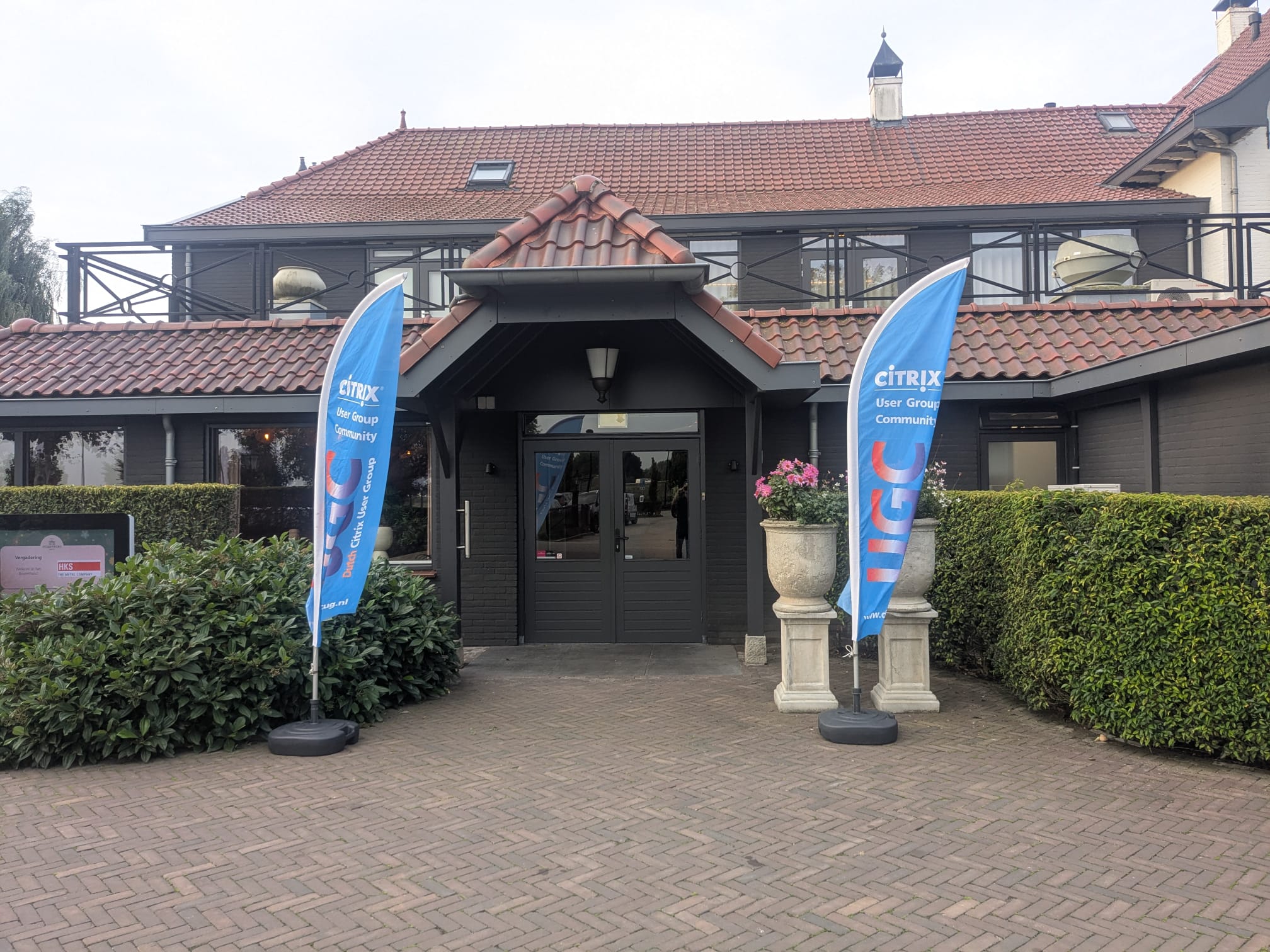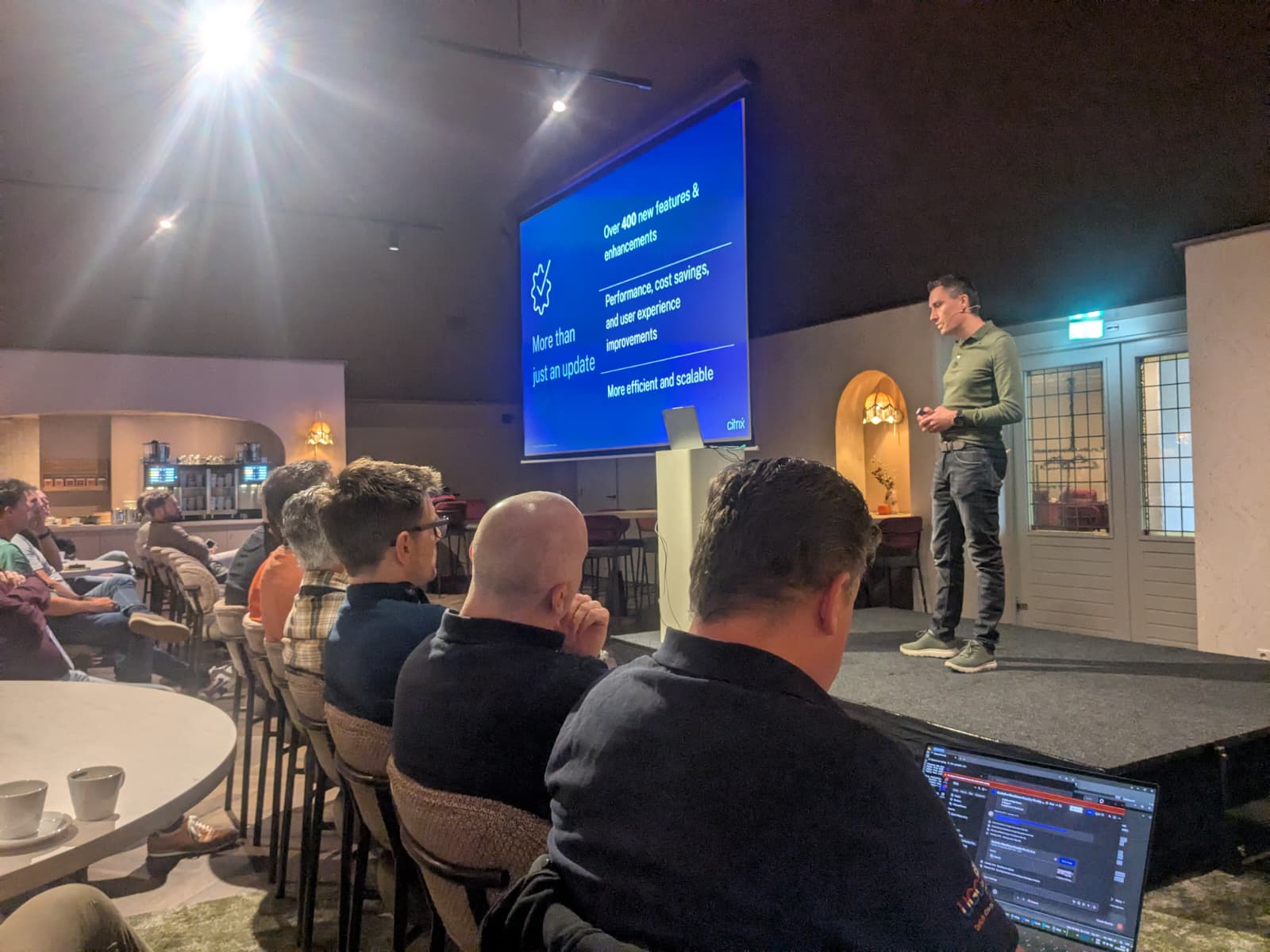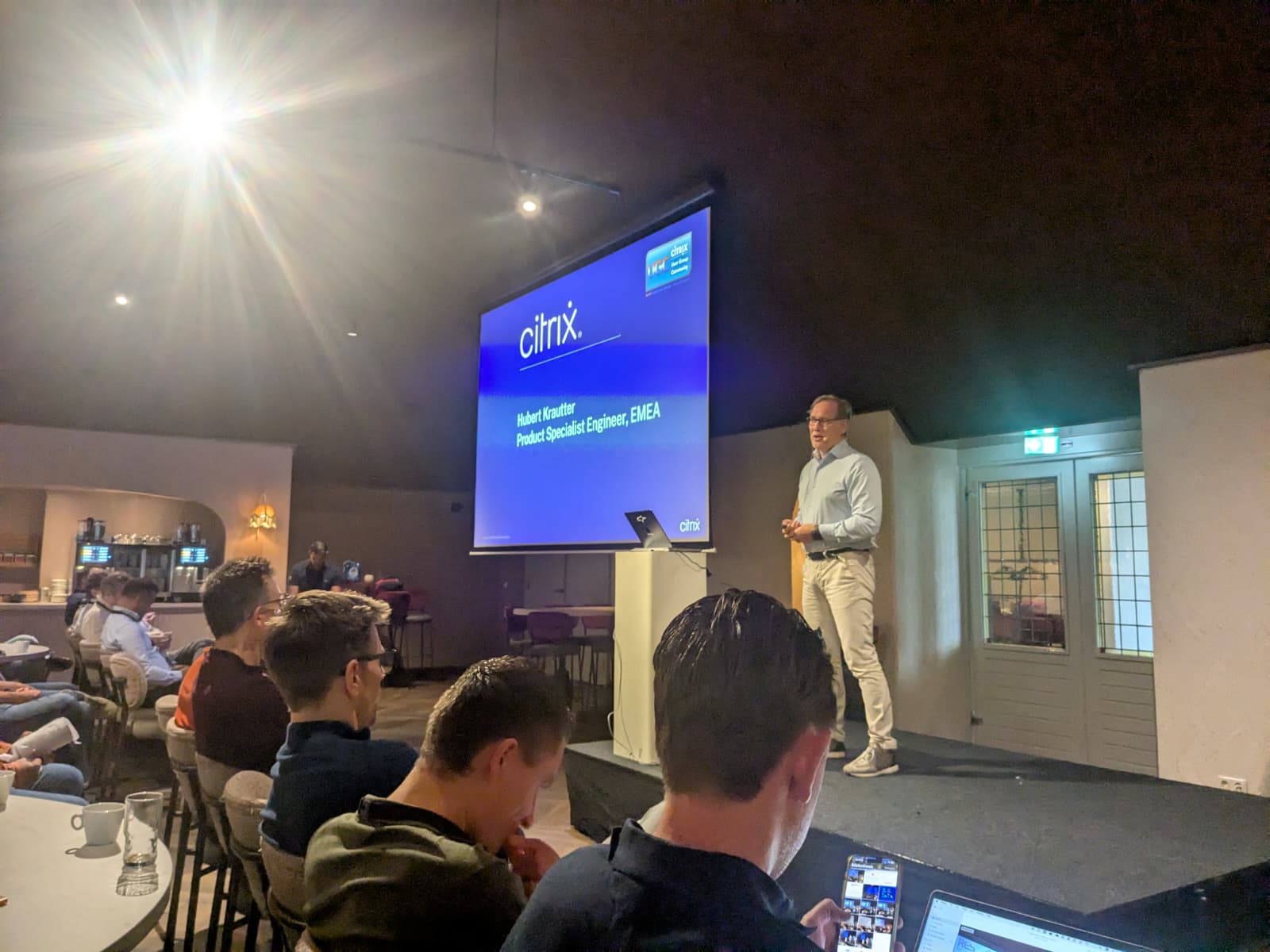On the 17th of September the second DuCUG event again at our home event location De Duikenburg in Echteld. My experience of the day can be found in this blog.
As I’m (as always) was welcoming the attendees I missed a part of the opening of Niek as usual. From this point I would also thank our sponsors one more time as they make this event possible.

First session of the day was by Rody Kossen with the session Citrix: what’s new. He started with explaining the new release schedule (2 CR and 1 LTSR per year) and support timelines (LTSR is now supported for 3 years instead of 5). Rody continued with the what’s new in the 2507 release: more integration with uberAgent and deviceTRUST (integration in the VDA and 400 new features in comparison with the previous LTSR. Next topic was session performance (third-party UC optimization details for Teams, Zoom, Webex, Teams monitoring in Director, HDX Insights for NS Gateway in Director). Rody continued with discussing HDX direct both for Internal as External HDX direct and enhanced multi-monitor experience (auto detect client monitor layout, easy to configure to extend over monitors). Graphics and Audio improvements was the next topic (intelligent build-to-loseless auto enabled per monitor --> with the default policies, GPU is required, HDX Super resolution upscaling --> downscale on the VDA, no GPU required, upscale videos on endpoint, tech preview, Browser Profile Sharing --> SSO experience on BCR pages, authentication on VDA, shared with BCR client, tech preview, audio quality enhancer --> adapts to network conditions for consistent performance, viewable via ctxaudio). Rody continued with security enhancements: Secure HDX (true end to end encryption, AES 256 GCM, no certificate management), in-session passkey support, session recording for endpoints, infrastructure monitoring (PVS, Storefront, Cloud Connectors, Delivery Controllers). Next was the simplified VDA upgrades (push VDA upgrades to persistent via Web Studio or PowerShell). Last topics for 2507 was cost optimization. As last topic Rody touched the tech preview of MS Entra Single Sign-on (no additional components, using the new MS authentication mechanism) and the preview of Citrix Assistant (supports end user to optimize the session).

After the session of Rody it was time for the traditional Bossche Bollen break. After that break we had the sponsor session of Nexthink presented by Dennis Damen. He started with explaining what Nexthink is doing and how the product is build (see, diagnose and fix / analyze and improve / enterprise productivity). Dennis dived a bit more in detail about VDI experience monitoring within Nexthink and provide a good overview what Nexthink can do for VDI environments.
Mick Hilhorst was next with the BYOS session TLSv1.2 vs TLSv1.3: A Deep Dive into Handshake Efficiency. Mick started explaining the differences in the handshakes/negations of TLS 1.2 and 1.3. Next topics were the Cipher suites (key exchange, signature, bulk encryption, message authentication, elliptic curve) and certificates/algorithm specialties. Atter this part Mick started with explaining the tests he did, followed by discussing the results with the final conclusion TLS 1.3 is faster, be safe with RTT-0, DHE is pretty cool).
Next session was Easy migration from IWC to WEM with Citrix's conversion tool presented by Bas Stapelbroek and Rick Roetenberg. They started with the question is if Workspace Environment Managers are still relevant. Next Bas mentioned the tow version available (WEM service and on-prem WEM) which version can import which settings. After this quick introduction Rick is demoing the tool. The session ended with some things to note (use latest WEM, enable assignment manually first, from WEM on prem to WEM service to get most imports, deviceTRUST can help with some other features, where they also showed some demos of use case where deivceTRUST can fulfill the requirement).
After an excellent lunch (as usual) Barry started the afternoon part with a talk about the DuCUG and the future of the DuCUG. We are happy that despite the current developments the near future is guaranteed that we can continue with the DuCUG events as we are doing currently.

After this talk the technical sessions continued with Google Enterprise Premium as a game changer in the Citrix Platform by Hubert Krautter. Hubert started with the todays threat landscape and more business applications are changed to web/SaaS applications. To protect those applications/data several solutions are there like ZTNA, CASB and SWG. Hubert explained why Citrix moved from their own browser to Chrome Enterprise. Next topic was the configuration of the Chrome Enterprise within the admin portal and how the infrastructure/components look like. The rest of the presentation was around explaining the set-up using Secure Private Access with Chrome Enterprise Premium (check the slides for more information, it was not easy to write that down in a blog).
Next session was EUC performance, Must-Know Insights for Windows 11 and Beyond by Kees Baggerman and Sven Huisman. Sven explained how they are performing the tests (Login Enterprise, density, user experience, resource usage). For this presentation they are focusing on density, logon time performance and application performance. These three counters were used to discuss the results of the six tests. Selecting a Windows OS version both on client OS as server OS. Take away, you need to upgrade in time, newer OS version require more resources. Kees compared the differences between the a client and a server OS. Sven continued with vCPU config with the following conclusions: vCPU ration 2:1 - 6-8 vCPS per VM for RDSH VMs, use more VMs with less per VM. Kees continued with the impact of security features (vbs, memory integrity, credential guard --> impact on CPU of security features, features enabled by default, can also impact application performance). Next topic the impact of the different type of hardware (cascade lake, ice lake, sapphire rapids). Last topic was the impact of the different Office versions (test performance before update). As a one more thing Sven compared the last two CVAD LTSR versions, where no performance difference was seen.
Last session of the day was by Remko Weijnen: Beyond ChatGPT AI tools you may not know, but should know. With cool/nice/funny stories and demos Remko is showing the capabilities of AI engines including the tools he is using (Claude Code and MCP). Remko also touched on the most used AI engines: GitHub Copilot, Cursor AI, Claude Code, where Remko asked AI the strong and weak points of these three tools.
The day ended with the traditional dinner, where again many people enjoyed the good food and nice talks with each other.
